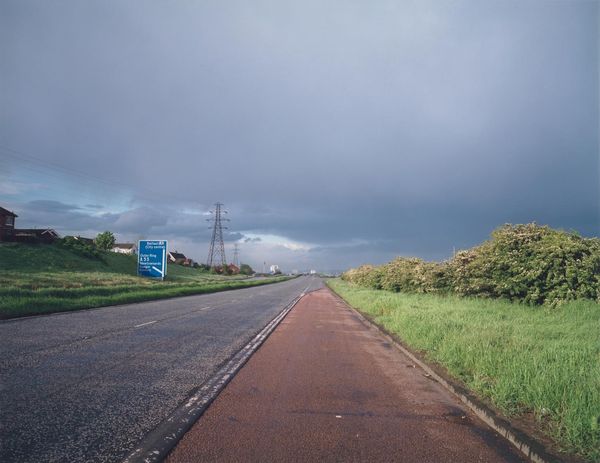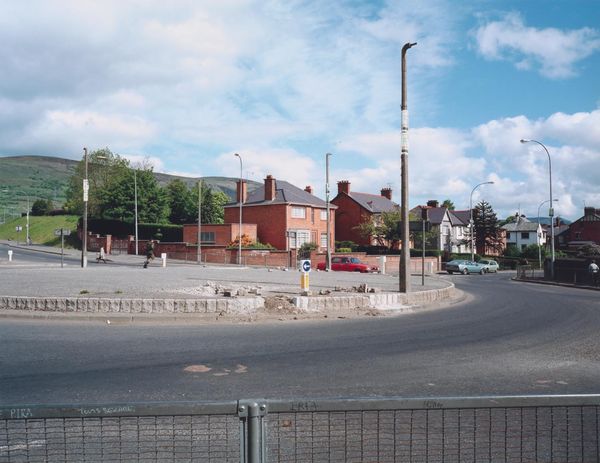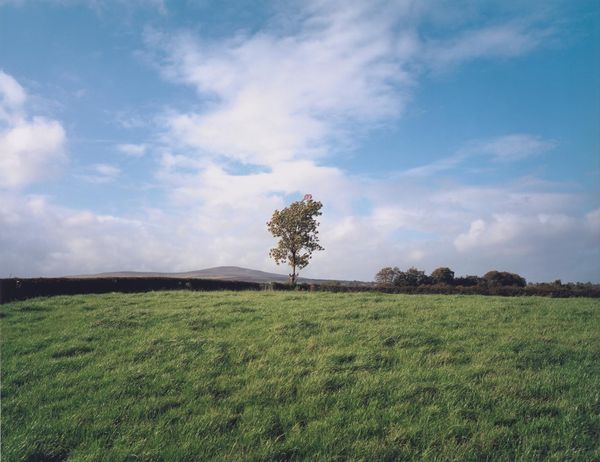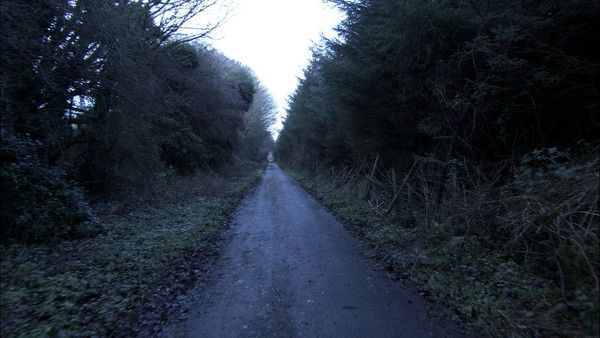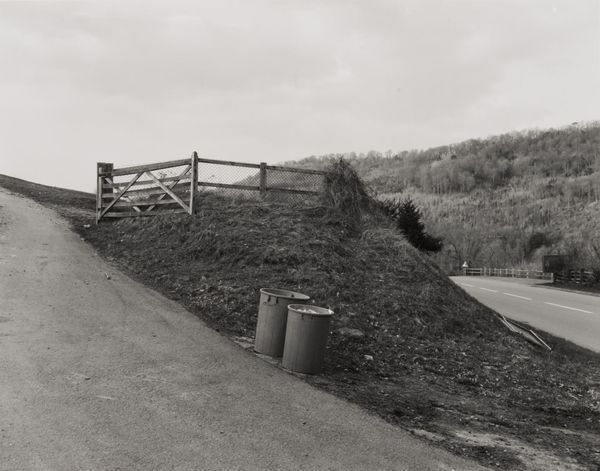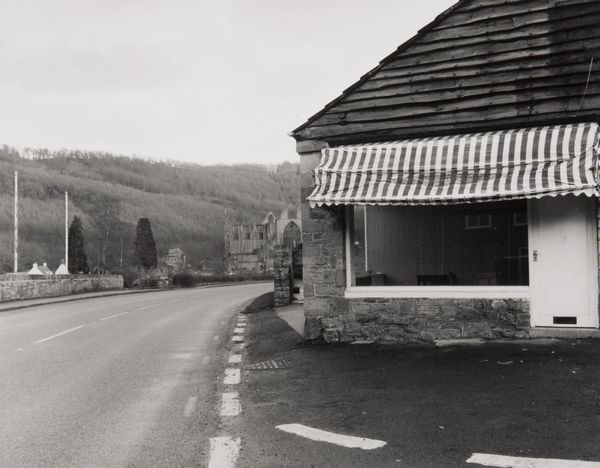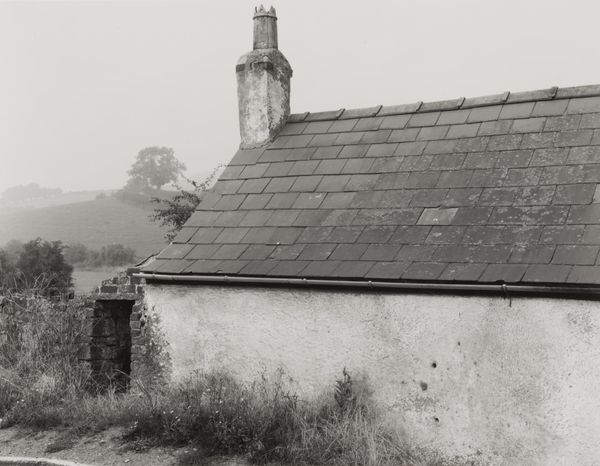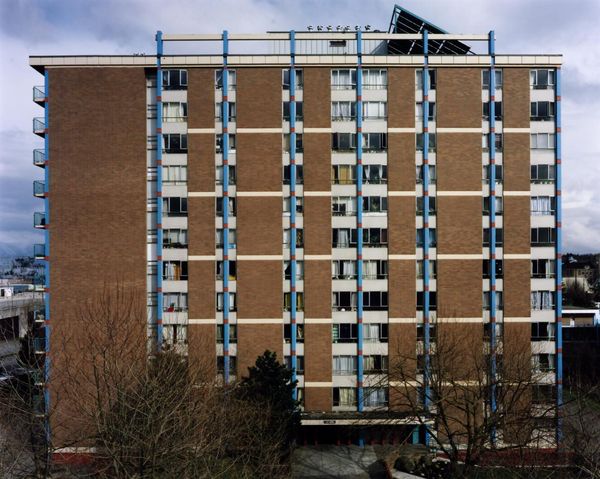
Dimensions: support: 680 x 880 mm
Copyright: © Paul Graham; courtesy Pace and Pace/MacGill Gallery, New York | CC-BY-NC-ND 4.0 DEED, Photo: Tate
Curator: Paul Graham's photograph, "H-Block Prison Protest, Newry," shows a seemingly ordinary Irish landscape. What do you make of it? Editor: Bleak. The overcast sky and empty road create an overwhelming sense of isolation and… waiting, wouldn’t you say? Curator: The light, or lack thereof, is definitely a key element. Notice the evenly spaced street lamps marching towards the horizon; they have a strange, unsettling rhythm. Editor: They’re like markers of powerlessness against that oppressive sky. Do you think the lack of figures amplifies the photograph's feeling of abandonment? Curator: Absolutely. The absence invites us to consider what exactly is being protested. It’s less about a specific event and more about an atmosphere of lingering tension. Editor: It certainly makes you wonder about the stories embedded in this landscape – the lives touched, the struggles endured. A quiet picture with a loud message. Curator: Yes, the layers of visual symbolism and historical context create a very palpable tension. Editor: I feel like now I need a pint and a long conversation about Irish history.
Comments
tatebritain 6 months ago
⋮
http://www.tate.org.uk/art/artworks/graham-h-block-prison-protest-newry-p79340
Join the conversation
Join millions of artists and users on Artera today and experience the ultimate creative platform.
tatebritain 6 months ago
⋮
From 1984 to 1986, Paul Graham documented Northern Irish locations featured in news reports of the Troubles. During his first visit, Graham was stopped by a British military patrol suspicious of his camera. As they left, he took a shot with his camera hanging from his neck. The photograph became a ‘gateway’ for Graham’s Troubled Land series. He felt his other images of rioting, murals and destruction, ‘weakly echoed what I saw in the newspapers. This one image did not’. ‘There were people walking to shops and driving cars – simply going about their day, but then there was a soldier in full camouflage, running across the roundabout.’ For Graham, the image ‘reintegrated the conflict into the landscape ... it was a conflict photograph masquerading as a landscape photograph.’ Gallery label, November 2024
